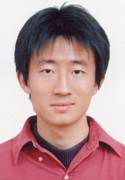题目:Joint Base Station Clustering and Transceiver 
Design in Heterogeneous Networks
时间:2013年6月9日(周日)下午16:00-17:00
地点:微电子楼-301多媒体教室
报告人:Dr. Mingyi Hong, Department of Electrical and
Computer Engineering, University of Minnesota
Short biography:
Mingyi Hong is currently a post-doctoral fellow with the Department of Electrical and Computer Engineering, University of Minnesota. He received his B.E. degree in Communications Engineering from Zhejiang University, China, his M.S. degree in Electrical Engineering from Stony Brook University (SBU) and Ph.D. degree in Systems Engineering from University of Virginia (UVa) in 2005, 2007 and 2011, respectively. During his graduate study he has received multiple fellowships from both institutions. His research interests include resource management in wireless networks, distributed optimization, theory and application for large-scale optimization.
Abstract:
We consider the interference management problem in a multicell MIMO heterogeneous network. Within each cell there is a large number of distributed micro/pico base stations (BSs) that can be potentially coordinated for joint transmission. To reduce coordination overhead, we consider user-centric BS clustering so that each user is served by
only a small number of (potentially overlapping) BSs. Thus, given the channel state information, our objective is to jointly design the BS clustering and the linear beamformers for all BSs in the network. In this paper, we formulate this problem from a sparse optimization perspective, and propose an efficient algorithm that is based on iteratively
solving a sequence of group LASSO problems. A novel feature of the proposed algorithm is that it performs BS clustering and beamformer design jointly rather than separately as is done in the existing approaches for partial coordinated transmission. Moreover, the cluster size can be controlled by adjusting a single penalty parameter in the nonsmooth regularized utility function. The convergence of the proposed algorithm (to a stationary solution) is guaranteed, and its effectiveness is demonstrated via extensive simulation.







 您的位置 :
您的位置 : 